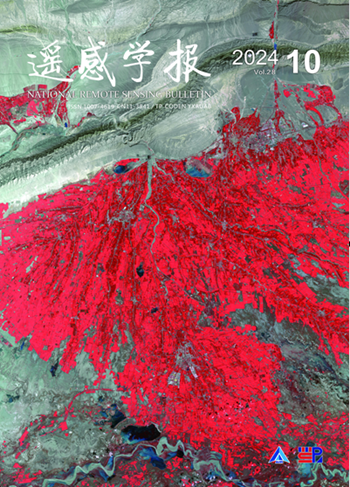The Assessment of Cross Calibration/Validation Accuracy for KOMPSAT-3 Using Landsat 8 and 6S
引用次数: 1
Abstract
In this study, we performed cross calibration of KOMPSAT-3 AEISS imaging sensor with reference to normalized pixels in the Landsat 8 OLI scenes of homogenous ROI recorded by both sensors between January 2014 and December 2019 at the Libya 4 PICS. Cross calibration is using images from a stable and well-calibrated satellite sensor as references to harmonize measurements from other sensors and/or characterize other sensors. But cross calibration has two problems; RSR and temporal difference. The RSR of KOMPSAT-3 and Landsat 8 are similar at the blue and green bands. But the red and NIR bands have a large difference. So we calculate SBAF of each sensor. We compared the SBAF estimated from the TOA Radiance simulation with KOMPSAT-3 and Landsat 8, the results displayed a difference of about 2.07~2.92% and 0.96~1.21% in the VIS and NIR bands. Before SBAF, Reflectance and Radiance difference was 0.42~23.23%. Case of difference temporal, we simulated by 6S and Landsat 8 for alignment the same acquisition time. The SBAF-corrected cross calibration coefficients using KOMPSAT-3, 6S and simulated Landsat 8 compared to the initial cross calibration without correction demonstrated a percentage difference in the spectral bands of about 0.866~1.192%. KOMPSAT-3 maximum uncertainty was estimated at 3.26~3.89%; errors due to atmospheric condition minimized to less than 1% (via 6S); Maximum deviation of KOMPSAT-3 DN was less than 1%. As the result, the results affirm that SBAF and 6s simulation enhanced cross-calibration accuracy.利用Landsat 8和6S对KOMPSAT-3交叉校准/验证精度的评估
在这项研究中,我们参考了2014年1月至2019年12月在利比亚4 PICS记录的Landsat 8 OLI均匀ROI场景中的归一化像素,对KOMPSAT-3 AEISS成像传感器进行了交叉校准。交叉校准是使用来自稳定和校准良好的卫星传感器的图像作为参考,以协调来自其他传感器的测量和/或表征其他传感器。但交叉标定存在两个问题;RSR与时间差异。KOMPSAT-3和Landsat - 8的RSR在蓝带和绿带相似。但是红色和近红外波段有很大的不同。因此,我们计算了每个传感器的SBAF。通过与KOMPSAT-3和Landsat - 8的比较,发现在可见光波段和近红外波段SBAF的差异分别为2.07~2.92%和0.96~1.21%。SBAF前,反射率和辐亮度差为0.42~23.23%。在时间差异的情况下,我们用6S和Landsat 8模拟了同一采集时间的对准。与未经校正的初始交叉校准相比,经saf校正后的KOMPSAT-3、6S和模拟Landsat 8交叉校准系数在光谱波段上的百分比差异约为0.866~1.192%。估计KOMPSAT-3的最大不确定度为3.26~3.89%;大气条件误差降到小于1%(通过6S);KOMPSAT-3 DN的最大偏差小于1%。结果表明,SBAF和6s模拟提高了交叉校准精度。
本文章由计算机程序翻译,如有差异,请以英文原文为准。
求助全文
约1分钟内获得全文
求助全文
来源期刊

遥感学报
Social Sciences-Geography, Planning and Development
CiteScore
3.60
自引率
0.00%
发文量
3200
期刊介绍:
The predecessor of Journal of Remote Sensing is Remote Sensing of Environment, which was founded in 1986. It was born in the beginning of China's remote sensing career and is the first remote sensing journal that has grown up with the development of China's remote sensing career. Since its inception, the Journal of Remote Sensing has published a large number of the latest scientific research results in China and the results of nationally-supported research projects in the light of the priorities and needs of China's remote sensing endeavours at different times, playing a great role in the development of remote sensing science and technology and the cultivation of talents in China, and becoming the most influential academic journal in the field of remote sensing and geographic information science in China.
As the only national comprehensive academic journal in the field of remote sensing in China, Journal of Remote Sensing is dedicated to reporting the research reports, stage-by-stage research briefs and high-level reviews in the field of remote sensing and its related disciplines with international and domestic advanced level. It focuses on new concepts, results and progress in this field. It covers the basic theories of remote sensing, the development of remote sensing technology and the application of remote sensing in the fields of agriculture, forestry, hydrology, geology, mining, oceanography, mapping and other resource and environmental fields as well as in disaster monitoring, research on geographic information systems (GIS), and the integration of remote sensing with GIS and the Global Navigation Satellite System (GNSS) and its applications.
 求助内容:
求助内容: 应助结果提醒方式:
应助结果提醒方式:


